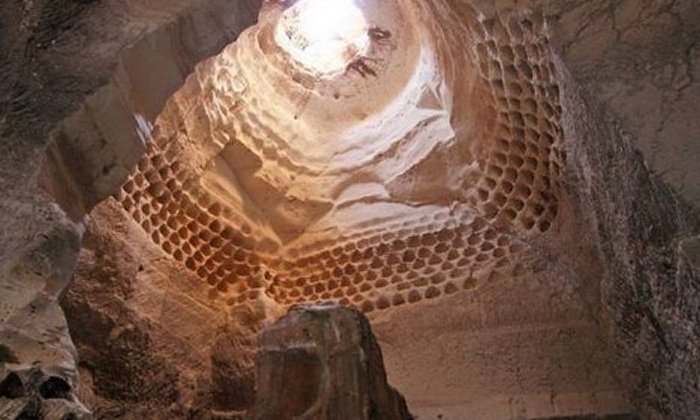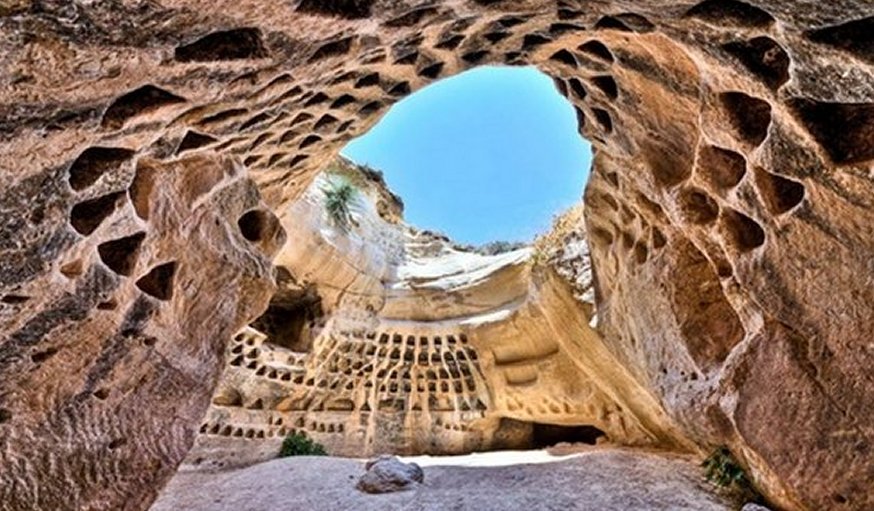3,500 Underground Man-Made Maresha/Beit Guvrin Caves And Tunnels In The Holy Land
A. Sutherland - AncientPages.com - The Beit Guvrin caves are a dark and beautiful ancient place, known as “the land of a thousand caves,” all covering approximately 1,250 acres of rolling hills in the Judean lowlands. This incredible ancient tunnel system is like an unending labyrinth. The caves, which are very difficult to find are located at the Beit Guvrin National Park.
Bet Guvrin was a prominent city in the period of the Second Temple. It rose to importance after the destruction of Maresha (Marissa) by the Parthians in 40 B.C It replaced the city of Maresha, which was one of the Judean cities mentioned in the Bible (Joshua 15:44 and Chronicles 2, 11; 5-8) as a city fortified by Rehoboam, a son of and the successor to Solomon, a grandson of David and the first king of the Kingdom of Judah. Thus, the city could withstand the Egyptian attack.
The city of Bet Guvrin began expanding following the Bar Kokhba (132 - 135 CE) revolt, during the second half of the second-century CE., with the construction of public and administrative buildings. In 199/200 C.E. Septimus Severus conferred on it the privileges of a Roman city and called it Eleutheropolis ("the city of freemen").
The city of that period covered an area of about 160 acres, and topographically it extended mainly over a hill located south of the present-day highway between Bet Shemesh and Ashkelon, with the northern extension of the city built on a low plain.
Two aqueducts and an underground tunnel supplied water to the city, which also had its own system of dating and coinage.
Archaeological excavations in the area revealed a mosaic pavement of a Roman house from the fourth-century CE. which depicts a hunting expedition, with representations of animals and the personifications of the four seasons.
The mosaic attests to the wealth of the city's inhabitants. The vast ancient tunnel system consists of thousands of man-made caves which were cut as quarries for the buildings which were built above them. This network of tunnels was often reached through trap doors in Jewish villages, giving the sense of how the Jewish rebels lived and fought during two revolts against the Romans.
Today, there are some archaeological sites in the area of these ancient tunnels, while others have been completely destroyed. As to the Beit Guvrin Caves, one of them is very large (over 60 feet high), airy, easily accessible, and its walls are made of beige-colored limestone.
While there are numerous bell caves within the park grounds, events are only held in one of these caves. It is one of about 800 bell-shaped caves located in the area.
The Beit Guvrin ancient tunnel system and remarkable caves can easily be labeled as a true wonder of the Holy Land, where archaeologists discovered ancient weapons, trap doors, and olive presses during their surveys. Also, earlier caves have been found farther north in the Galilee region, where team members were called to explore a tunnel system found just a few months ago.
Archaeologists had uncovered what they thought was a standard, eight-meter-deep water cistern, but later noticed it had narrow crawl spaces shooting off its base.
With a metal detector and laser measuring tools, they spent hours mapping just a fraction of the tunnels. Researchers have also mapped many of the nearby cavern hideouts that dot the cliffside of Mount Arbel overlooking the Sea of Galilee.
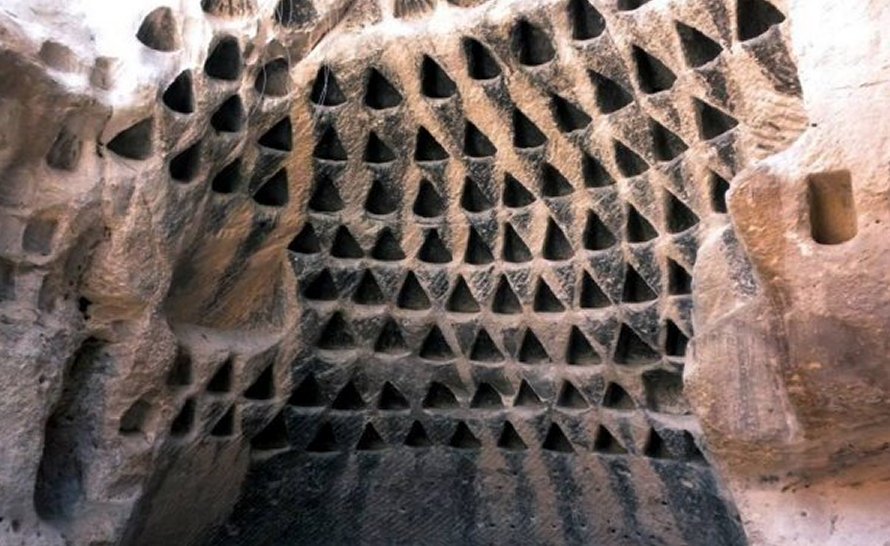
Roman historian Josephus described in his writings how King Herod lowered his men in chests from the cliff to the cave openings and, using fire, overtook the rebels.
Caves of Maresha and Bet-Guvrin in the Judean Lowlands - situated on the crossroads of trade routes to Mesopotamia and Egypt - contain approximately 3,500 underground chambers spread out across complexes carved in the thick chalk.
This place witnessed many cultures and their evolution over more than 2,000 years from the 8th century BC when Maresha town (older than Bet-Guvrin) was built - to the time of the Crusaders.
In the Late Roman period (AD 200), Bet Guvrin became Eleutheropolis (“City of the Free”) when Roman Emperor Septimus Severus contributed to the town's development and turned it into a major administrative center.
Written by: A. Sutherland - AncientPages.com Senior Staff Writer
Copyright © AncientPages.com. All rights reserved. This material may not be published, broadcast, rewritten or redistributed in whole or part without the express written permission of AncientPages.com.
Expand for referencesMore From Ancient Pages
-
 Horses Skinfaxi And Hrimfaxi – Bringers Of Light And Darkness To Earth In Norse Mythology
Featured Stories | Dec 16, 2017
Horses Skinfaxi And Hrimfaxi – Bringers Of Light And Darkness To Earth In Norse Mythology
Featured Stories | Dec 16, 2017 -
 Legend Of Marguerite de Bressieux: Brave Noblewoman Who Sought Revenge For Sexual Assault
Featured Stories | Mar 29, 2020
Legend Of Marguerite de Bressieux: Brave Noblewoman Who Sought Revenge For Sexual Assault
Featured Stories | Mar 29, 2020 -
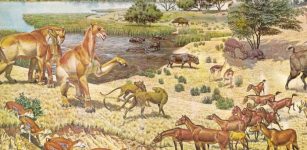 Horses In Florida Did Not Travel Far Distances – New Study Suggests
Archaeology | Jan 3, 2019
Horses In Florida Did Not Travel Far Distances – New Study Suggests
Archaeology | Jan 3, 2019 -
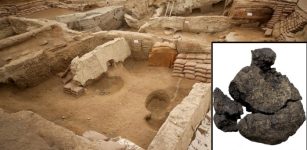 World’s Oldest Bread Found In Neolithic Oven In Çatalhöyük, Turkey
Archaeology | Mar 12, 2024
World’s Oldest Bread Found In Neolithic Oven In Çatalhöyük, Turkey
Archaeology | Mar 12, 2024 -
 Indian Black Earth And Biodiversity Of The Amazon – New Study
Archaeology | Jun 24, 2020
Indian Black Earth And Biodiversity Of The Amazon – New Study
Archaeology | Jun 24, 2020 -
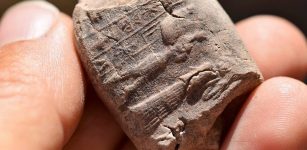 Old Babylonian Residential Building In Ur Dated To 1835 BC – Investigated
Archaeology | Jul 24, 2019
Old Babylonian Residential Building In Ur Dated To 1835 BC – Investigated
Archaeology | Jul 24, 2019 -
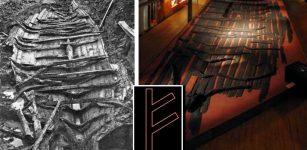 Äskekärrskeppet (‘Äskekärr Ship’) – Only Viking Ship Found With Runes
Featured Stories | Apr 18, 2024
Äskekärrskeppet (‘Äskekärr Ship’) – Only Viking Ship Found With Runes
Featured Stories | Apr 18, 2024 -
 8-Million-Year-Old Jaw May Offer Evidence Humans Evolved In Europe Instead Of Africa – Controversial Theory Suggests
Archaeology | Apr 24, 2019
8-Million-Year-Old Jaw May Offer Evidence Humans Evolved In Europe Instead Of Africa – Controversial Theory Suggests
Archaeology | Apr 24, 2019 -
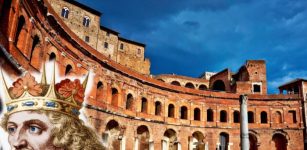 On This Day In History: First Siege Of Rome Began – On March 2, 537
News | Mar 2, 2017
On This Day In History: First Siege Of Rome Began – On March 2, 537
News | Mar 2, 2017 -
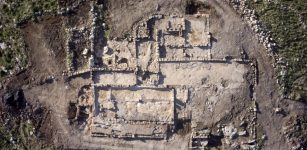 Impressive 2,700-Year-Old Farmhouse And 1,500-Year-Old Monastery Uncovered In Rosh Ha-‘Ayin
Archaeology | Dec 30, 2015
Impressive 2,700-Year-Old Farmhouse And 1,500-Year-Old Monastery Uncovered In Rosh Ha-‘Ayin
Archaeology | Dec 30, 2015 -
 William Adams: The Journey To Becoming The First White Samurai
Featured Stories | Jul 11, 2018
William Adams: The Journey To Becoming The First White Samurai
Featured Stories | Jul 11, 2018 -
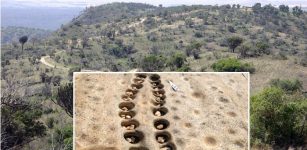 ‘Arcade’ Of Ancient Mancala Game Boards Carved On Rocks Found In Lewa Wildlife Conservancy, Kenya
Archaeology | Feb 2, 2024
‘Arcade’ Of Ancient Mancala Game Boards Carved On Rocks Found In Lewa Wildlife Conservancy, Kenya
Archaeology | Feb 2, 2024 -
 The Untold Story Of The Inca – Mysterious Place Of The Raised Stones – Part 2
Civilizations | Jul 5, 2019
The Untold Story Of The Inca – Mysterious Place Of The Raised Stones – Part 2
Civilizations | Jul 5, 2019 -
 The Untold Story Of Sacsayhuamán – Falcon’s Place Is Not What It Seems
Featured Stories | Apr 28, 2020
The Untold Story Of Sacsayhuamán – Falcon’s Place Is Not What It Seems
Featured Stories | Apr 28, 2020 -
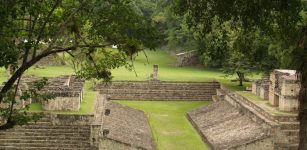 On This Day In History: First European Sights The Ruins Of Ancient Maya City Of Copán – On Mar 8, 1576
News | Mar 8, 2017
On This Day In History: First European Sights The Ruins Of Ancient Maya City Of Copán – On Mar 8, 1576
News | Mar 8, 2017 -
 Kava – Astonishing Ancient Plant That Improves Emotional Intelligence Is Gaining Popularity In The Western World
Featured Stories | Mar 31, 2018
Kava – Astonishing Ancient Plant That Improves Emotional Intelligence Is Gaining Popularity In The Western World
Featured Stories | Mar 31, 2018 -
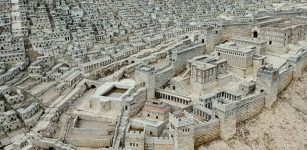 Early City Planning In The Kingdom Of Judah Examined
Archaeology | Jul 5, 2023
Early City Planning In The Kingdom Of Judah Examined
Archaeology | Jul 5, 2023 -
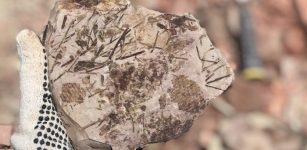 Long-Lost Paleontological Site With More Than 100 Unique Fossils Re-Discovered In Brazil
Archaeology | Jul 4, 2022
Long-Lost Paleontological Site With More Than 100 Unique Fossils Re-Discovered In Brazil
Archaeology | Jul 4, 2022 -
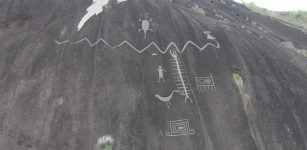 Largest Ever Recorded Ancient Petroglyphs Found In Venezuela – Mapped
Archaeology | Dec 10, 2017
Largest Ever Recorded Ancient Petroglyphs Found In Venezuela – Mapped
Archaeology | Dec 10, 2017 -
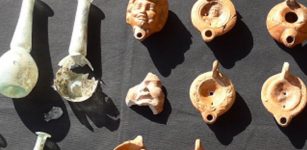 2,000-Year-Old Historical Tombs Unearthed In Close Vicinity To Ancient City Of Laodicea
Archaeology | Jan 23, 2020
2,000-Year-Old Historical Tombs Unearthed In Close Vicinity To Ancient City Of Laodicea
Archaeology | Jan 23, 2020


